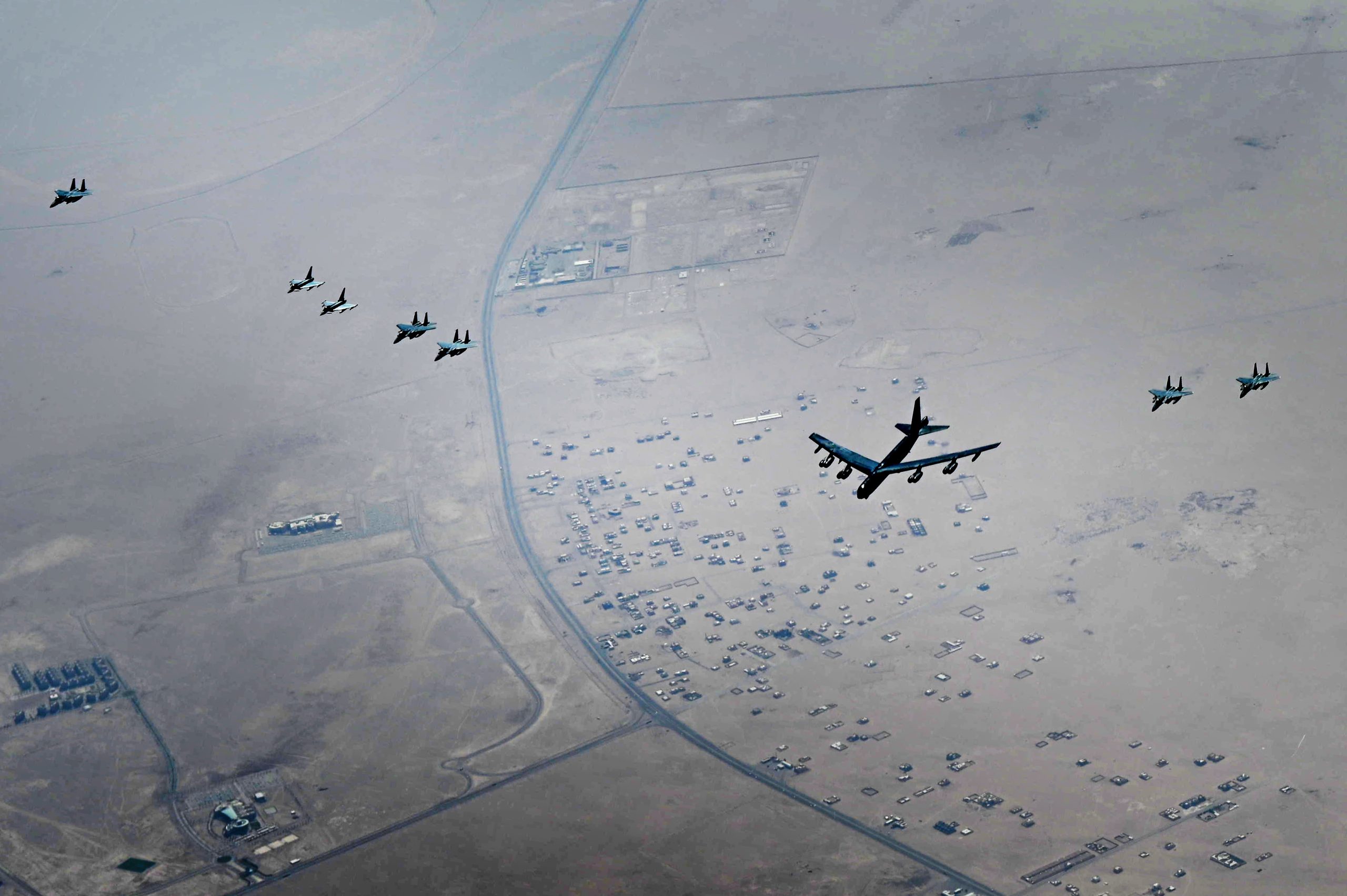
Ian Patrick, FISM News
[elfsight_social_share_buttons id=”1″]
On Sunday, the United States Air Forces Central announced that it conducted “a Bomber Task Force mission” over a wide area of the Middle East on September 3.
According to the announcement, “two B-52H Stratofortresses … conducted theater integration training and operations with a variety of U.S. Air Force, partner, and ally aircraft.” Allies involved in the mission include the Royal Air Force (United Kingdom) and the Air Forces of Kuwait and Saudi Arabia.
Although not announced in the statement from Air Forces Central, Israel’s military noted that it sent three of its F-16i fighter jets to accompany the B-52s.
Today, three IDF F-16i fighter jets accompanied two U.S. B-52 bombers through Israel’s skies on their way to the Gulf.
This flight is part of the close cooperation with the U.S. Armed Forces, which is significant to maintaining aerial security in Israel and the Middle East. pic.twitter.com/jZtndmRBRm
— Israel Defense Forces (@IDF) September 4, 2022
In addition to the allied aircraft, representatives from 16 other coalition nations assisted in the logistics for the mission which began in England and flew over the Eastern Mediterranean, Arabian Peninsula, and the Red Sea.
Lt. Gen. Alexus Grynkewich, 9th Air Force (Air Forces Central) commander remarked that this mission “is a strong, clear representation of enduring U.S. commitment to the region.”
“Threats to the U.S. and our partners will not go unanswered,” Grynkewich said. “Missions like this BTF showcase our ability to combine forces to deter and, if necessary, defeat our adversaries.”
Royal Canadian Air Force Lieutenant Colonel Terry Wong, who helped in logistical support, said that the enhancement in communications allows the establishment of “a clear and direct line in real-time amongst the Air Operations Centers of all nations participating. This allows us to work towards a common goal and leads to mission success.”
While the reason for the flyover went unannounced, multiple news agencies, including the Associated Press, have linked the mission to increased tensions with Iran as the Biden administration has been seeking to reinstitute the Obama-era Joint Comprehensive Plan of Action (JCPOA) nuclear deal with Tehran, which has had mixed reactions.
Former President Trump had pulled out of the nuclear deal citing Iran’s failure to adhere to its limitations. Upon the U.S. withdrawal from the deal and reimplementation of harsh sanctions, Iran blatantly overstepped its nuclear limitations while demanding a return to the JCPOA.
Reports out of the negotiations have suggested that Iran is seeking more leniency in regard to its nuclear program than it had received under the Obama-era plan.
The last flyover directly linked to tensions with Iran was reported in June of this year.
